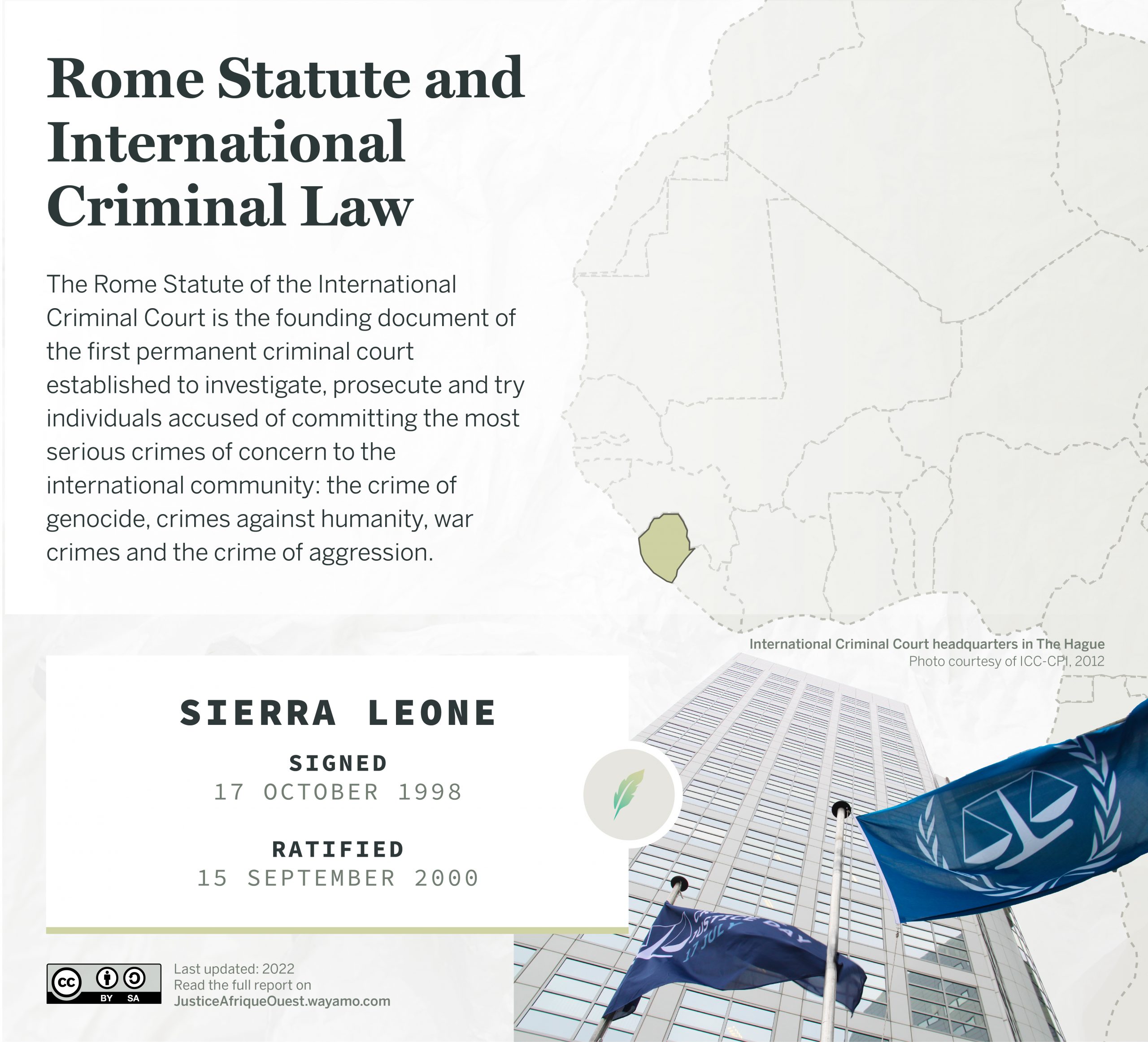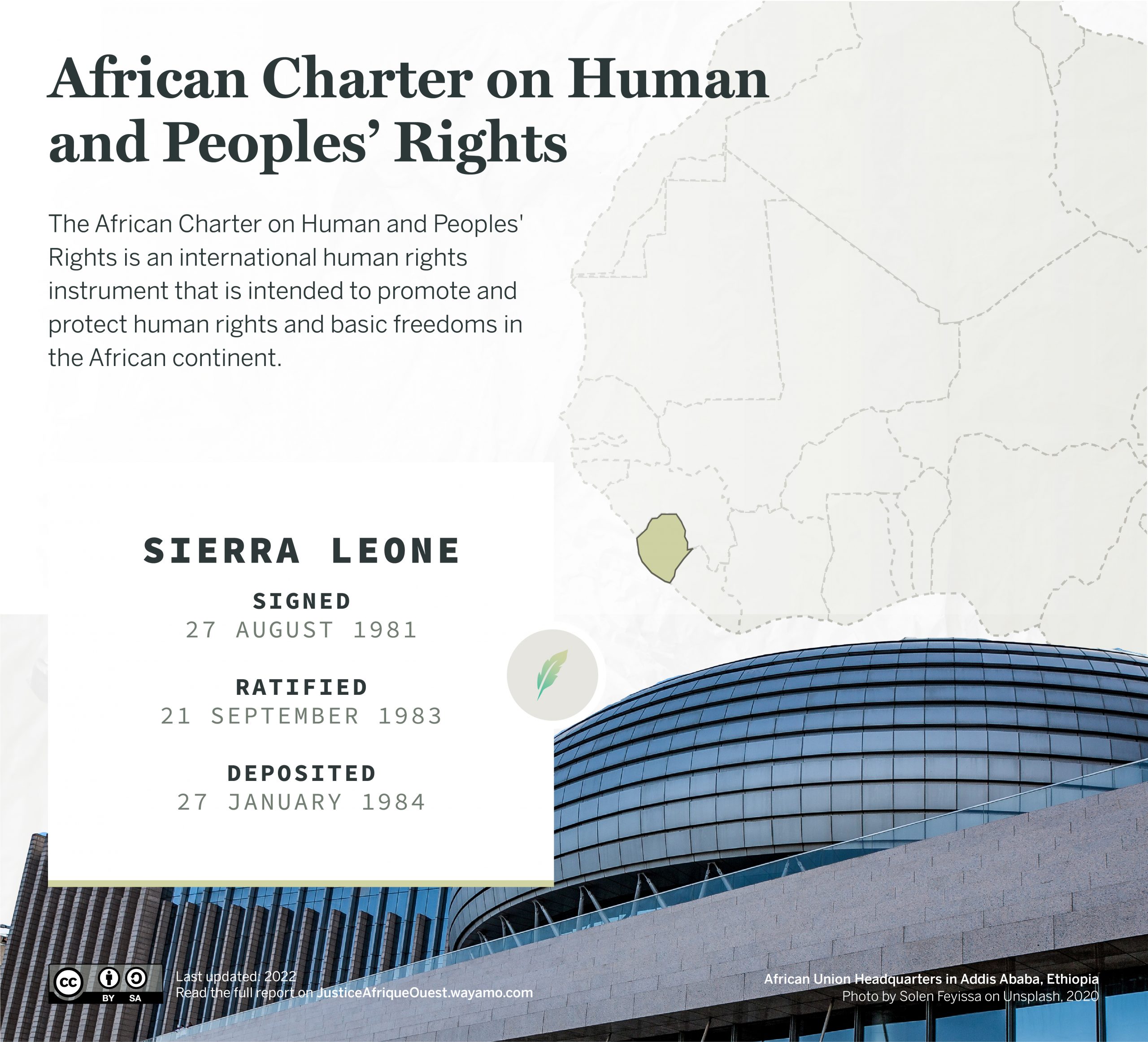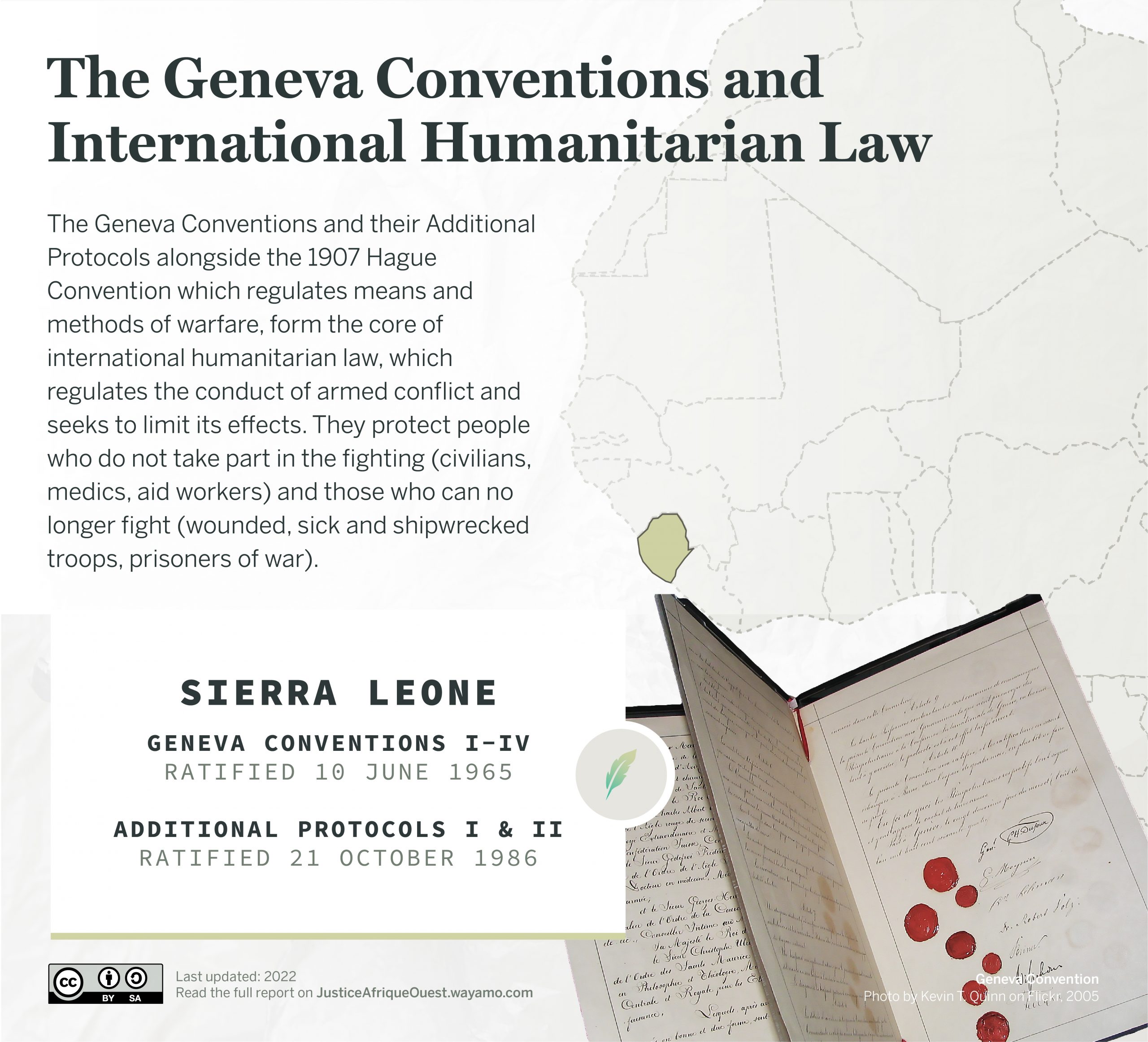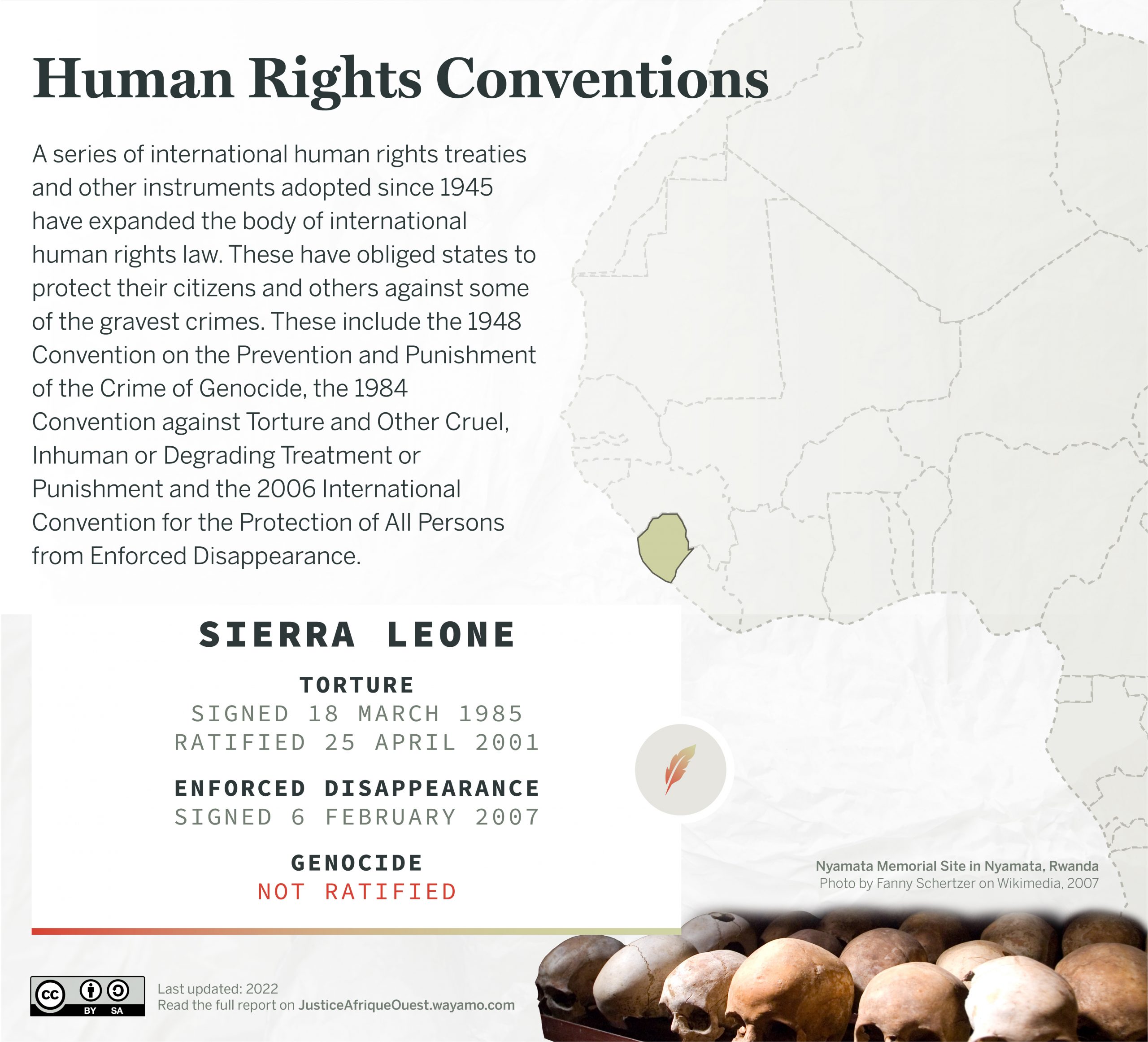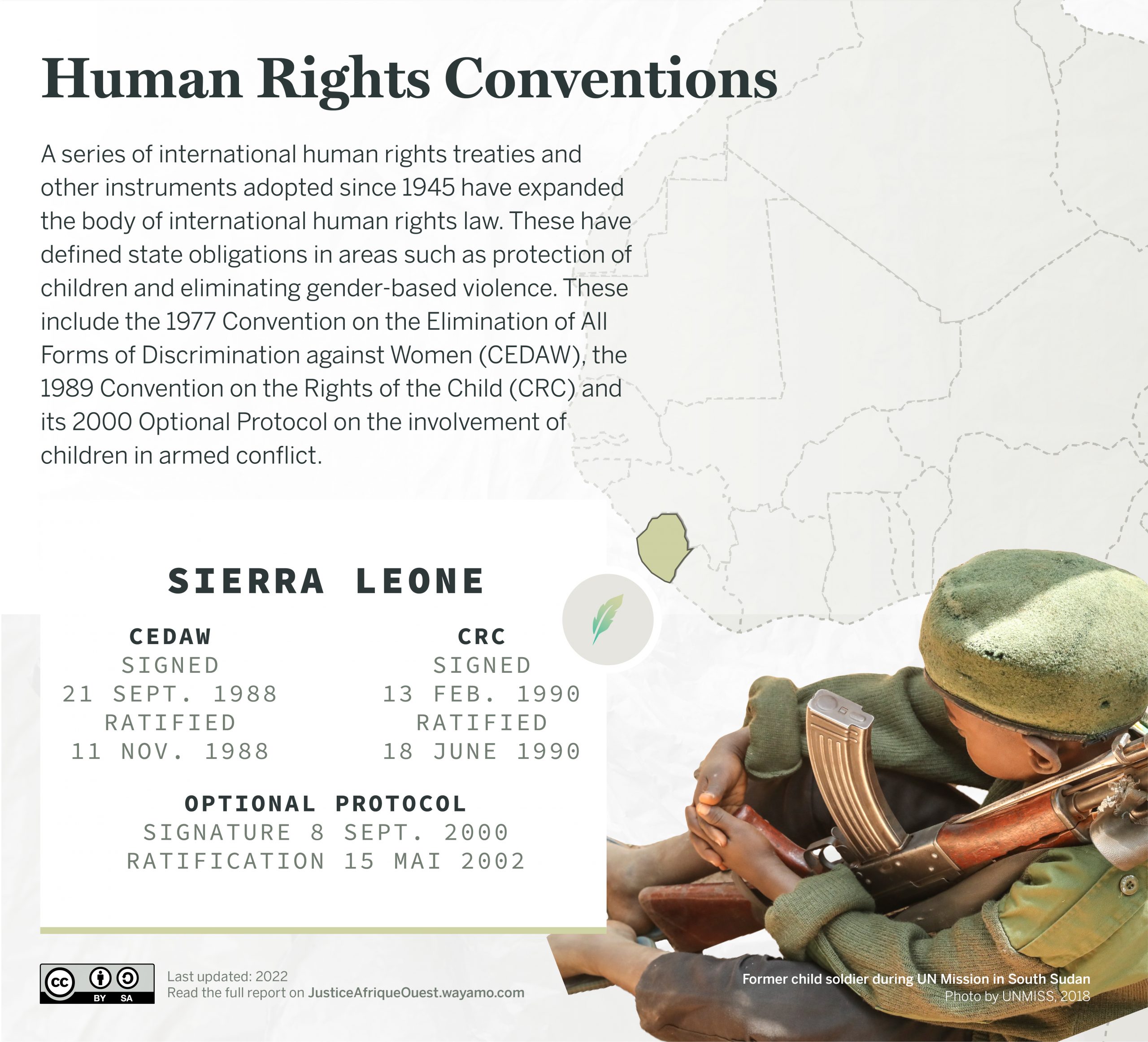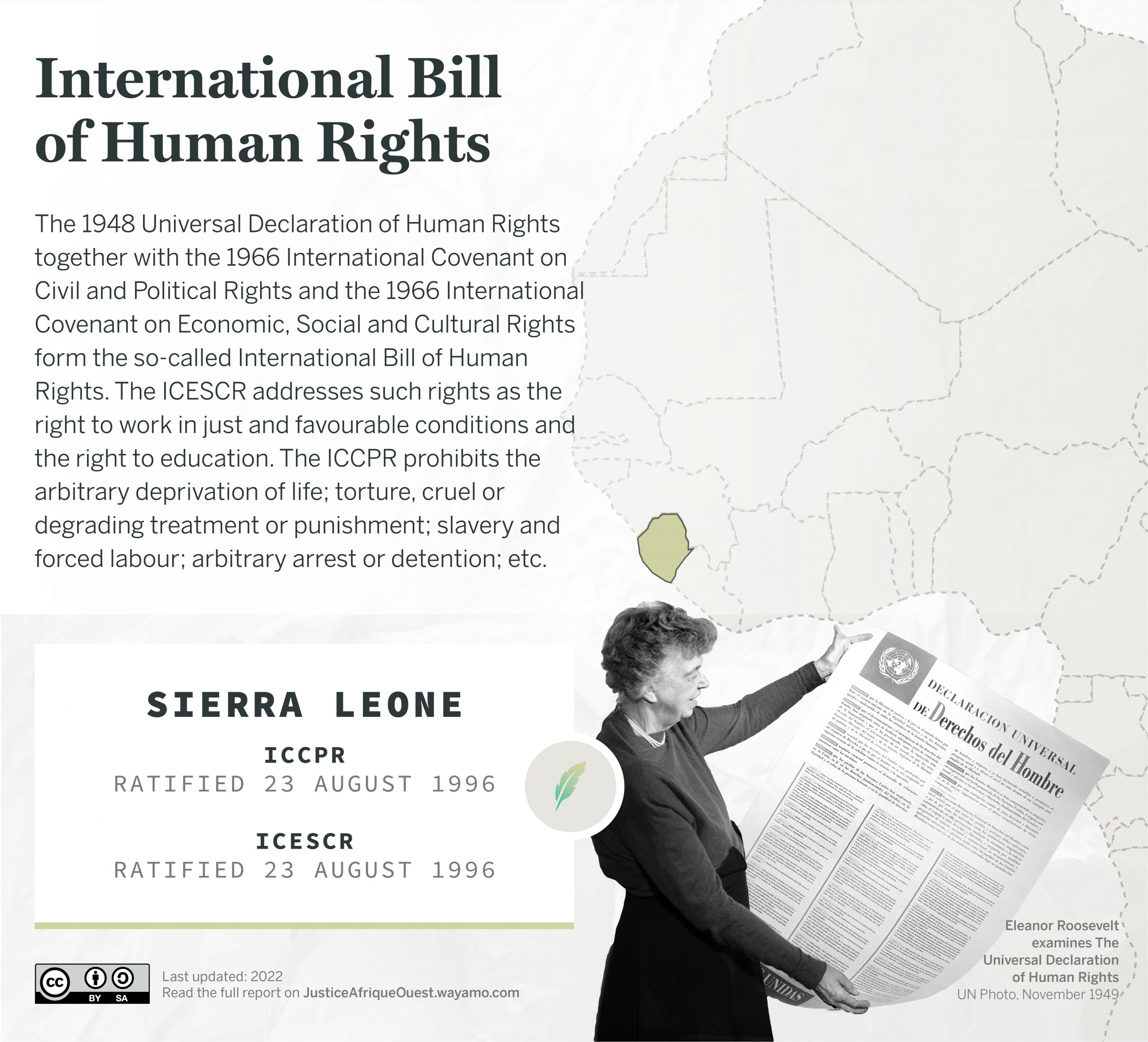The cases before the Special Court
1. The Revolutionary United Front trial
Five leaders of the RUF – Foday Sankoh, Sam Bockarie, Issa Sesay, Morris Kallon and Augustine Gbao – were indicted for international crimes before the SCSL. The indictments against Sankoh and Bockarie were withdrawn by the prosecution in December 2003 following their deaths. The trial of the remaining three accused began in Freetown on 5 July 2004. Each of the accused was charged with eight counts of crimes against humanity, eight counts of war crimes, and two counts of other serious violations of international humanitarian law.
The charges related to atrocities committed against civilians and civilian property and included acts of terrorism, extermination, sexual slavery and other sexual violence, outrages upon person dignity, enlisting or conscripting children under the age of fifteen or using them to participate actively in hostilities, offences against United Nations Mission in Sierra Leone peacekeepers including intentionally attacking personnel on a peacekeeping mission, murder, and hostage taking, among other offences.22
On 25 February 2009, the Trial Chamber found Sesay and Kallon guilty on 16 of 18 counts of war crimes, crimes against humanity and other serious violations of international humanitarian law, and Gbao guilty on 14 counts of war crimes and crimes against humanity.23 The judgement broke new ground as it marked the first ever conviction in an international tribunal for forced marriage as a crime against humanity, as well as the crime of attacking United Nations Peacekeepers.
The accused were sentenced to prison in April 2009 for 52 years in the case of Sesay, 40 years in the case of Kallon and 25 years in the case of Gbao. They appealed the judgement, and on 6 October 2009 the Appeals Chamber overturned Gbao’s conviction on Count 2 – the war crime of collective punishment – but upheld the sentences imposed by the Trial Chamber. They were transferred to Mpanga prison in Rwanda on 31 October 2009 to serve their sentences.24
2. The Armed Forces Revolutionary Council trial
The Armed Forces Revolutionary Council (AFRC) was made up of SLA soldiers who overthrew the government of President Kabbah on 25 May 1997. It appointed Army Major Johnny Paul Koroma, a retired SLA officer as their chairman and invited the RUF into a governing alliance. Four AFRC leaders – Alex Tamba Brima, Ibrahim Bazzy Kamara, Santigie Borbor Kanu and Johnny Paul Koroma – were subsequently indicted by the Special Court and charged with war crimes, crimes against humanity, and other serious violations of international humanitarian law.25
The accused were taken into the court’s custody between March and September 2003. Koroma fled Sierra Leone and has never been brought to trial; although he is widely believed to be dead, although his indictment remains open until his death is officially confirmed. A consolidated indictment against the remaining three accused was approved in January 2004 and a joint hearing began in March 2005. The Trial Chamber found the accused guilty on 11 of the 14 counts in the indictment. The judgement marked the first time that an accused person was tried and convicted for the use of child soldiers in an armed conflict.26 Brima and Kanu were sentenced to 50 years imprisonment while Kamara received a 45-year sentence. The conviction and sentences were upheld on appeal and the accused were transferred to Mpanga prison in Rwanda to serve their sentences.27
3. The Civil Defence Forces trial
The Civil Defence Forces (CDF) were a collection of local pro-government militias composed mainly of “Kamajors”, traditional Sierra Leonean hunters who fought in the conflict in Sierra Leone between November 1996 and December 1999.28
The Trial Chamber ordered a joint trial of three leaders of the CDF – Sam Hinga Norman, Moinina Fofana and Allieu Kondewa – in February 2004, with their trial beginning in June the same year. The accused were charged with war crimes, crimes against humanity and other serious violations of international humanitarian law. The Trial Chamber concluded closing arguments in the case in November 2006, but Norman died before judgement was pronounced, thus leading to the termination of proceedings against him in May 2007.
Fofana and Kondewa were found guilty of war crimes and Kondewa guilty of other serious violations of international law in August 2007.29 In May 2008, the Appeals Chamber overturned part of the convictions but also entered new convictions on some counts and increased the sentences against the accused. Fofana was sentenced to 15 years and Kondewa to 20 years imprisonment. On 28 May 2018, Fofana completed his sentence and was discharged from the jurisdiction of the court. Kondewa was granted a conditional early release in July 2018 and allowed to complete his sentence in Sierra Leone.
4. The Charles Taylor trial
The conflict in Sierra Leone was closely tied with that in Liberia. Former President Charles Taylor faced prosecution at the SCSL for supporting the RUF and AFRC/RUF alliance during the conflict. This was despite his argument that he was protected from the court’s jurisdiction on the grounds of sovereign immunity and extraterritoriality.30 At the time his 17-count indictment was unsealed in June 2003, Taylor was still the President of Liberia. On August 11, 2003 he stepped down as president and went into exile in Nigeria where he had been granted asylum.
On 16 March 2006, the SCSL approved an amended indictment against him, reducing the number of counts from 17 to 11. These included five counts of war crimes: terrorising civilians, murder, outrages on personal dignity, cruel treatment, looting; five counts of crimes against humanity:, namely, murder, rape, sexual slavery, mutilating and beating, enslavement; and one count of other serious violations of international humanitarian law for the recruitment and use of child soldiers. It was alleged that these crimes were committed in multiple locations across Sierra Leone and that Taylor was individually criminally responsible for the crimes through planning, aiding and abetting their commission. It was further alleged that he was responsible as a superior for the crimes committed directly by the RUF, AFRC and Liberian fighters.
On 26 April 2012, the Trial Chamber found Charles Taylor guilty on all eleven counts.31 He was sentenced to 50 years in prison, which was upheld on appeal. Taylor is serving his sentence in the United Kingdom.32


